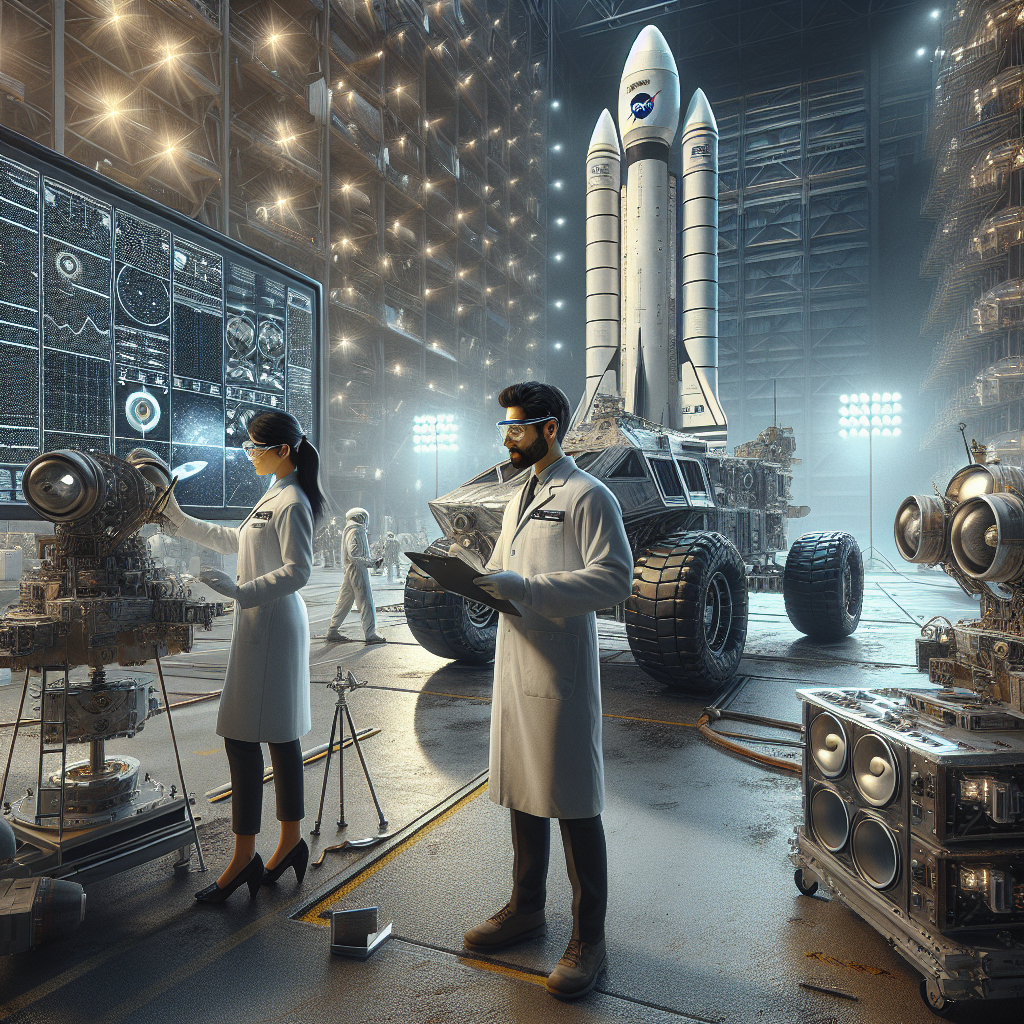
“NASA’s 2024 Student Launch Challenge: Launching Rockets and Inspiring STEM Careers”

NASA’s 2024 Student Launch Challenge: Future Trends and Predictions
Introduction
NASA’s Student Launch challenge has become a highly anticipated event that brings together students from various educational backgrounds to launch amateur rockets and payloads. With the upcoming 2024 edition of the challenge, there are several key points to analyze in terms of potential future trends and predictions for the industry.
The Evolution of Student Launch
Since its inception, Student Launch has provided students with the opportunity to engage in relevant research and development of rocket propulsion systems. The competition aligns with NASA’s Artemis campaign, which aims to return humans to the Moon, including the first woman and person of color. This connection to NASA’s missions is vital in inspiring students to pursue careers in STEM fields.
One notable trend in Student Launch is the yearly change in the payload component, reflecting current NASA missions. For the 2024 challenge, students will design a SAIL (STEMnaut Atmosphere Independent Lander) payload. This emphasis on designing a reusable and safe lander aligns with NASA’s goals for sustainable space exploration. The development of such technology by students showcases the potential for future advancements in spacecraft landing systems.
Innovations in Payload Design
The 2024 Student Launch challenge presents an opportunity for students to showcase their ingenuity in payload design. The requirement to deploy the payload mid-air and safely return it to the ground without using a parachute presents a unique challenge. The emphasis on designing a reusable payload that can launch the same day without repairs or modifications highlights the importance of efficiency and cost-effectiveness in space missions.
A potential future trend in this area is the development of advanced landing technologies that rely on technologies other than parachutes. Students participating in Student Launch have the opportunity to explore novel landing concepts that might find applications in real-world space missions. Additionally, the use of non-living objects representing astronauts in the payload highlights the potential for autonomous systems and robotic exploration in space.
Competitive Categories and Industry Engagement
Student Launch features a comprehensive scoring system that evaluates teams in various categories, including safety, vehicle design, social media presence, and STEM engagement. This multi-faceted approach promotes a holistic understanding of space exploration, involving not only technical aspects but also communication and outreach.
A future trend in Student Launch could involve the inclusion of additional categories that focus on sustainability and environmental impact. With a growing emphasis on sustainable practices in all industries, space exploration should also strive to minimize its ecological footprint. Adding categories that evaluate teams’ commitment to sustainable practices would encourage students to consider the environmental impact of their designs.
The involvement of industry partners in funding and leadership roles is also a significant aspect of Student Launch. Companies such as Northrup Grumman and Relativity Space contribute to the competition, showcasing the industry’s interest and investment in cultivating young talent. This trend is expected to continue, with more companies recognizing the value of engaging with student-led initiatives to identify future employees and foster innovation.
Recommendations for the Industry
Based on the trends and predictions discussed above, there are several recommendations for the industry moving forward:
1. Foster Collaboration: Encourage greater collaboration between educational institutions and industry partners to provide students with practical experiences that align with real-world space missions. This could involve internships, mentorship programs, or joint research projects.
2. Emphasize Sustainability: Incorporate sustainability as a core principle in future student challenges. Encourage teams to consider the environmental impact of their designs and recognize sustainable practices through dedicated award categories.
3. Invest in Outreach: Allocate resources to support and expand outreach programs that expose students to STEM education and space exploration. This investment will ensure a pipeline of talented individuals entering the industry in the coming years.
4. Promote Diversity and Inclusion: Take proactive measures to promote diversity and inclusion within the aerospace industry. NASA’s Artemis campaign aims to put the first woman and person of color on the Moon, and educational initiatives like Student Launch should reflect this commitment to diversity.
Conclusion
NASA’s 2024 Student Launch challenge represents an exciting opportunity for students to engage in rocketry and payload design. The event’s emphasis on aligning with NASA’s missions and fostering STEM education contributes to the industry’s future growth and innovation. By recognizing and capitalizing on the potential future trends discussed, the aerospace industry can ensure a bright future with a diverse and talented workforce.
References:
1. NASA Student Launch, Retrieved from https://www.nasa.gov/learning-resources/nasa-student-launch/